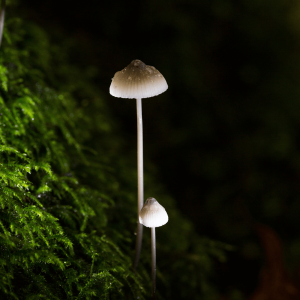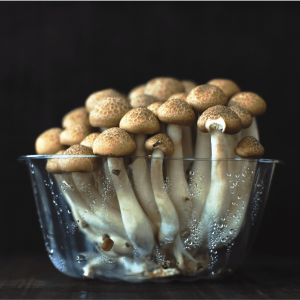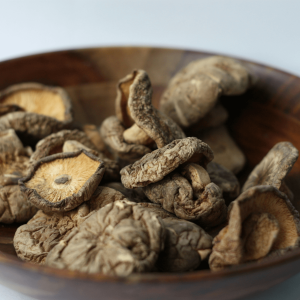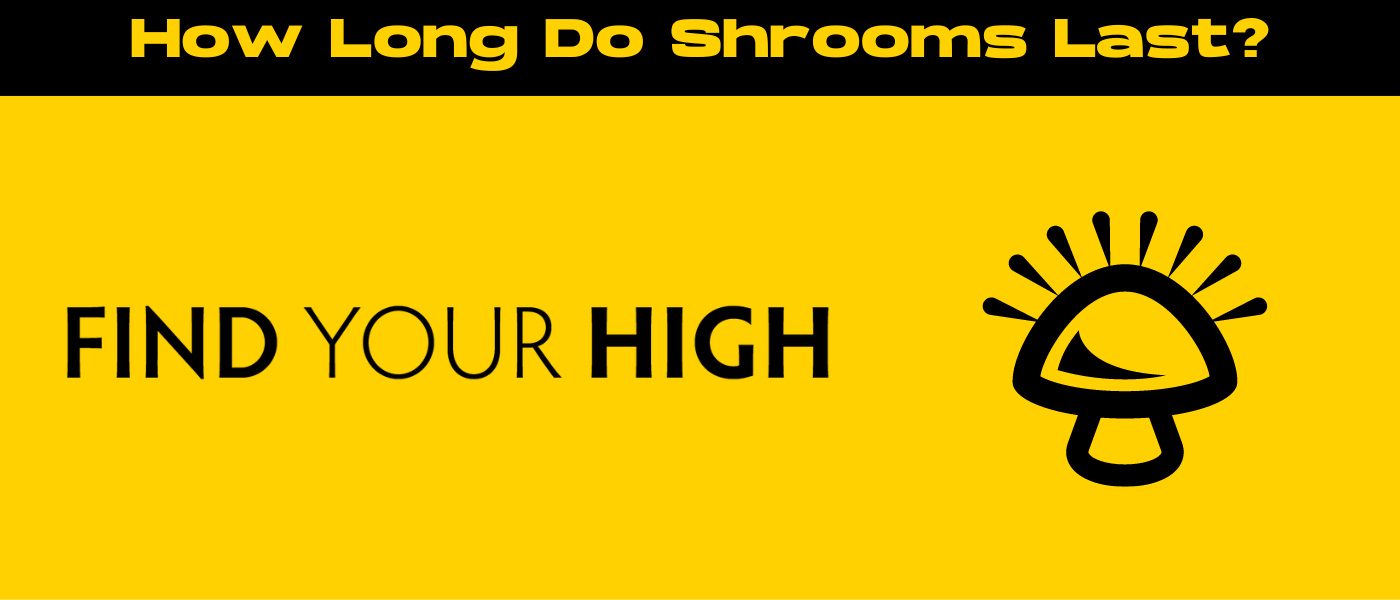Have you ever looked at your watch mid-trip, only to realize that time is just a concept and your hands are fascinating? And of course, this discovery leads you to wonder, ‘How long do shrooms last anyway?’
Well, you’re not alone.
When consuming shrooms, hours can feel like minutes, and minutes can feel like… let’s just say a really long time. So, before you begin your psychedelic experience, keep reading for a better understanding of what you can expect.
What are Shrooms?
Shrooms, scientifically known as psilocybin mushrooms, are a group of fungi that carry a potent compound called psilocybin. Psilocybin is a naturally occurring psychedelic substance that causes hallucinations and sensory distortions when consumed.
These mushrooms have been used for centuries in religious and spiritual rituals, and more recently, they’re being explored for potential therapeutic uses.
They come in various species, each with different levels of the active compound, hence the variations in their psychedelic potency.
It’s worth mentioning that while shrooms can provide profound experiences, it’s important to use them responsibly considering their powerful effects and potential legal implications in certain places.

A Short History of Shrooms
The history of shrooms is as fascinating as their psychedelic effects. The ancient use of these mystical fungi can be traced back to several indigenous tribes around the globe.
In Central America, for instance, psilocybin mushrooms were widely used in religious and spiritual rituals, earning the name ‘teonanácatl‘, meaning “flesh of the gods” in Nahuatl.
Mesoamerican murals and sculptures from as early as 1000 BC depict mushroom motifs, showing their deep-rooted historical significance. Similarly, in North Africa, rock paintings dating back to 9000-7000 BC suggest the use of mushrooms in prehistoric societies.
In the 1950s, shrooms’ psychedelic properties were rediscovered. It all started when an American banker and ethnomycologist, R. Gordon Wasson, ventured to Mexico and joined a traditional mushroom ceremony with a local shaman. His mind-blowing experience, which he later shared in Life magazine, created a buzz around psilocybin mushrooms in the West. This sparked further research and the eventual recognition of their potential therapeutic benefits.
While the use of shrooms has been stigmatized and even criminalized in many parts of the world over the past century, recent shifts in policy and public perception indicate a brighter future for these ‘magic’ mushrooms.
The Chemistry of Shrooms
The ‘magic’ in magic mushrooms is all thanks to two specific compounds: psilocybin and psilocin. These bad boys are the main psychoactive ingredients that bring on those trippy effects we associate with shroom consumption.
Psilocybin, in its pure form, is a crystalline white powder. However, when it is present in mushrooms, it is in a stable, non-psychoactive form. Upon ingestion, the body converts it into psilocin, the substance that actually affects the brain.
Psilocin has a profound and complex impact on the brain. It mainly messes with the serotonin receptors, especially the 5-HT2A receptor. Serotonin is a neurotransmitter that regulates mood, cognition, and perception. So when psilocin begins interacting with these receptors, things get a little trippy. We’re talking altered perception, funky visual effects, time feeling all wonky, and maybe even some spiritual awakening and good vibes if you’re lucky.
It’s a fascinating process, but remember, the effects can vary wildly depending on the individual, type of shroom, dosage, and the environment in which they’re consumed. And while the potential therapeutic benefits of psilocybin are being studied, misuse of shrooms can lead to negative psychological effects.
The Different Types of Shrooms
Believe it or not, there are over 200 species of shrooms that contain psilocybin or its derivative psilocin. Let’s take a look at a few well-known types:
- Psilocybe Cubensis: This is arguably the most famous species of psilocybin mushrooms, also known as ‘Golden Teacher.’ It’s known for its golden caps and is prevalent in subtropical regions. These shrooms provide a warm, philosophical trip and are a great choice for beginners.
- Psilocybe Azurescens: Found mainly on the West Coast of the USA, these mushrooms are potent, and small servings are enough to experience a deep, thoughtful trip.
- Psilocybe Semilanceata: Also known as the ‘Liberty Cap,’ this is one of the most widespread wild psilocybin mushrooms. It’s recognized by its pointy cap and is potent, often yielding strong, visionary trips.
- Psilocybe Cyanescens: Commonly referred to as the ‘Wavy Cap’ for its rippled, cap appearance. These are potent magic mushrooms that induce intense visual effects and deep introspection.
- Panaeolus Cyanescens: Also known as ‘Blue Meanies,’ these shrooms are known for their potency and high psilocybin content. They are not for beginners, and the trips can be very intense.
- Psilocybe Baeocystis: These are commonly referred to as ‘Knobby Caps.’ They’re less common than other species but are known for their varying effects based on dosage, with effects ranging from euphoria to intense, spiritual experiences.

What to Expect from a Shroom Trip
After ingesting shrooms, the effects usually begin to be felt after about 20-40 minutes, with variations depending on the individual’s dosage and metabolism. Keep in mind that a shroom trip is a highly personal experience and the effects can differ from person to person.
During this initial phase, you may feel a sense of happiness, laughter, and good vibes. You may also experience physical effects such as fluctuations in body temperature, nausea, increased heart rate, or heightened sensory perception.
As time goes on, usually about 60-90 minutes later, the psychedelic effects intensify. People frequently perceive enhanced vibrancy in colors, light trails, and peculiar shapes. Additionally, auditory hallucinations may also occur.
Time can also get a bit trippy. Minutes can feel like hours, or the opposite, like time is flying by. You might experience thought-provoking ideas, a strong sense of connection to everything, or even reminisce about old memories.
When the effects start to fade away, usually after 4-6 hours, you’ll start feeling more relaxed and reflective. Don’t forget that the whole experience can be influenced by your mindset and your environment when you take the shrooms.
How Long Do Shrooms Last?
The length of a shroom trip can vary depending on different factors like the mushroom species, dosage, how you consume them, and your own body.
On average, you’ll feel the psychedelic effects for about 4 to 6 hours after taking them. This is when you’ll experience the most intense psychedelic effects, like hallucinations, altered perception, and changes in mood and thinking.
Usually, you’ll start feeling the first effects in 20 to 40 minutes, and then your experience will begin to intensify after about 60 to 90 minutes.
After the peak, you will gradually calm down over the next 2-4 hours. This is what we call the ‘come down’ phase, where you’ll feel more relaxed, contemplative, and the visuals will start to fade.
Keep in mind that these timeframes are just general guidelines. Each trip is unique and can be unpredictable.

6 Factors That Affect the Duration of Shrooms
Several factors can affect a shrooms trip, from dosage and consumption method to tolerance and individual physiology. But before we dive in, it’s important to remember that everyone’s experience is unique and can be unpredictable. So, always approach with caution and show respect for the shrooms.
Dosage
The amount of shrooms taken can significantly affect the duration of the trip. A higher dose typically results in a longer-lasting experience, while a smaller dose may result in a shorter trip.
Species of Mushroom
Different species of magic mushrooms have varying levels of psilocybin and psilocin. Therefore, the particular species consumed can impact the trip’s duration and intensity.
Method of Consumption
How shrooms are consumed can also impact how long the effects last. Eating them raw, brewing them into tea, or taking them in capsule form can alter the absorption rate and subsequently the length of the trip.
Individual Physiology
A person’s metabolism, body weight, and overall health can influence how quickly the body processes psilocybin and psilocin, thereby affecting the duration of the trip.
Tolerance
If shrooms are used frequently, the body can develop a tolerance, which might require a higher dose for the same effects and potentially extend the duration of the trip.
Set and Setting
Your mental state and environment can influence how you perceive the length of the trip. A comfortable, safe setting and positive mindset can lead to a more pleasant, seemingly shorter trip, while a stressful environment may cause the experience to feel longer.
What Influences the Potency of Shrooms?
The potency of magic mushrooms can be influenced by several factors. Understanding these factors can help make your experience safer, more controlled, and even beneficial.
Here are some of the key factors that can affect the strength of shrooms:
Species of Mushroom
As we’ve mentioned before, different species of mushrooms contain different concentrations of the active compounds psilocybin and psilocin. That said, the species of the mushroom plays a significant role in determining its potency. For instance, Psilocybe Azurescens is known to be one of the most potent species of psychedelic mushrooms.
Growing Conditions
The environment where the mushrooms are grown also affects their potency. Variables like temperature, humidity, light, and the substrate used for growing can all influence the shrooms’ psilocybin and psilocin content.
Harvesting and Storage
The time at which the mushrooms are harvested can impact their potency. Generally, mushrooms are most potent right before the veil under the cap breaks. Additionally, the way they are stored post-harvest can also influence potency. Moisture can decrease the concentration of active compounds, so it’s important to store them in a cool, dry place.
Preparation Method
How the shrooms are prepared for consumption can also influence their potency. When psilocybin is heated or boiled, it can degrade and lose its potency. Therefore, methods like brewing tea or cooking with shrooms might reduce their strength.
Individual Tolerance
The potency of shrooms is also subjective and largely depends on the person consuming them. Some people may have a natural tolerance or sensitivity to psilocybin, which can make the shrooms seem more or less potent than they would be to someone else.

How Long Do Shrooms Last In Your System?
Similar to other drugs, how long shrooms stay in your system varies depending on several factors, including metabolism speed, hydration, body mass, and the specific type of drug test used.
Typically, psilocybin can be detected in the blood within 30 minutes of ingestion and can remain detectable for up to six hours.
Routine drug tests, such as urine tests, can detect shrooms for up to 24 hours. However, hair follicle tests can detect psilocybin and many other substances for up to 90 days.
It’s important to note that these are general guidelines, and actual detection times can vary based on individual physiological differences and the frequency of use.
Conclusion
Exploring the world of magic mushrooms can be a mind-opening adventure, but it’s important to approach it with respect, knowledge, and caution.
Remember, factors like dosage, species, consumption method, your own body, tolerance, and the environment can all affect how long and intense your shroom trip will be. The way they’re grown, harvested, stored, and prepared can also impact their potency.
Being prepared is key to having a safe and enjoyable trip – clear your schedule, set up a comfy space, have a trusted trip-sitter, and keep a positive mindset. And if things get challenging during the trip, remember, it won’t last forever. Change your surroundings, focus on your breath, and listen to some calming tunes.
Afterward, take it easy and reflect on the experience calmly. Knowledge and understanding are essential when setting off on a psychedelic journey.

Frequently Asked Questions
1. Can I shorten the duration of a shroom trip if it’s too intense?
While it’s difficult to significantly shorten the duration of a shroom trip once it has begun, there are a few things you can do to try and mitigate the intensity of the experience. Changing your setting, focusing on your breathing, and listening to calming music can all help to soothe you. It’s important to remember that even if a trip feels overwhelmingly intense, it will pass with time.
2. Will consuming shrooms frequently make my trips last longer?
Not necessarily. While consuming shrooms frequently can potentially lead to developing a tolerance, it doesn’t necessarily extend the duration of the trip. However, it’s important to note that frequent use can lead to other issues, such as psychological dependence, and it’s generally recommended to space out psychedelic experiences to maintain mental health, especially for those with mental health conditions.
Can shrooms show up in drug tests?
Yes, psilocybin mushrooms are known to stay in your system and can be detected in a drug test. However, most drug tests such as the 5-panel or 10-panel urine tests, which are commonly used for employment or legal purposes, do not typically screen for psilocybin or its metabolite psilocin.
More specialized tests, such as specific blood tests, a hair follicle test, or advanced urinalysis, can detect the presence of these substances, but they are quite expensive and not commonly used.
The detection window for psilocybin varies depending on several factors, including the dosage, metabolism rate, and the user’s overall health, but it is generally believed to stay in your system and be detectable in urine for up to a week after consumption.

 Rewards
Rewards





